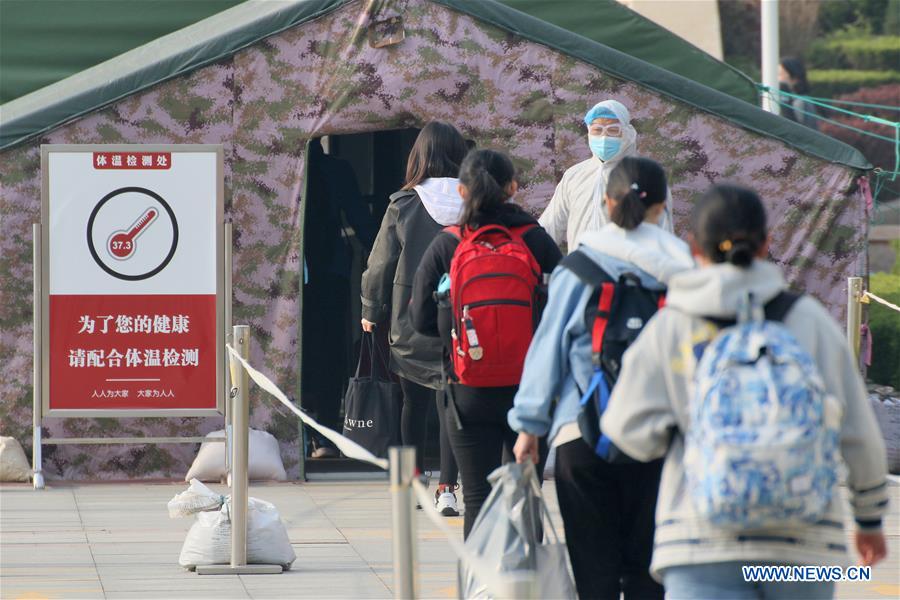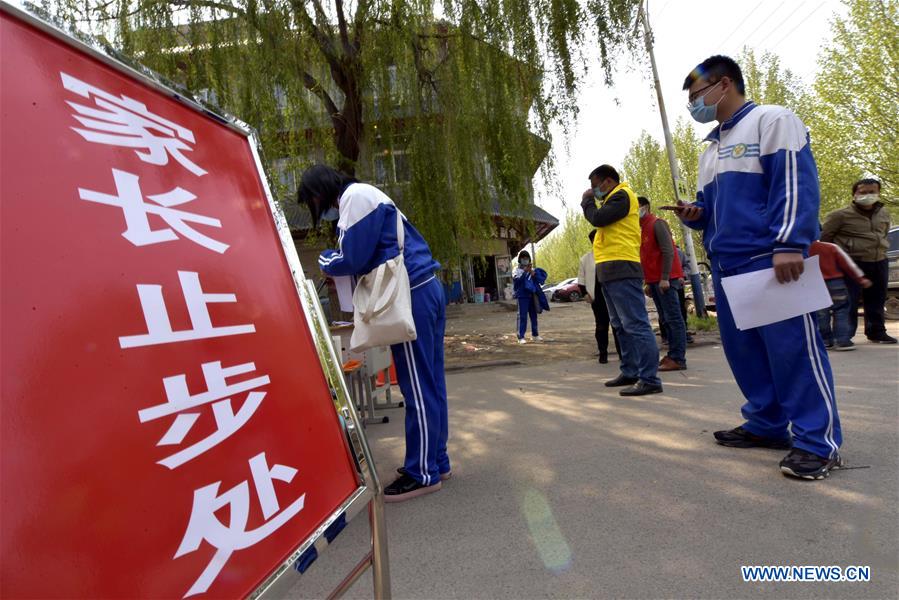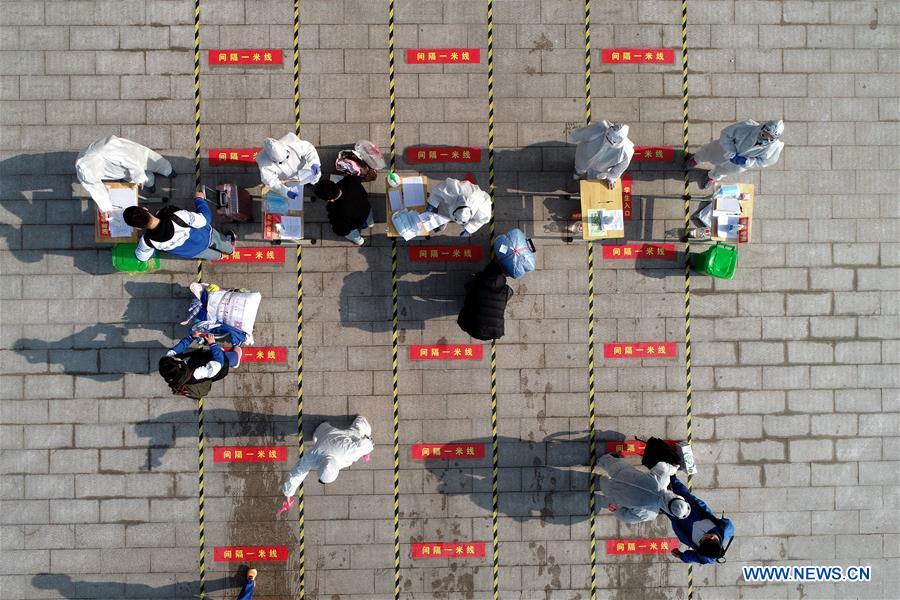There seemed no doubt when schools closed earlier this year that closures were a necessary response to the pandemic. The question is whether that reasoning has sufficiently subsided for the opening of school doors to be again acceptable. If groups of 10 people or more are being banned from assembling, how can classrooms of 15 students be allowed? If yesterday we were at risk of possible infection – and fatality – how, today, is it ok for students and teachers to group together in a school where social distancing is particularly hard to control? Policy makers, parents and teachers all have strong but conflicting views.
There are multiple approaches to opening schools in high-income countries at the moment. In Denmark and Norway, some schools and creches have already reopened. One cost-effective approach to the problem is to teach outside, something that Denmark is doing, as this eye-opening photo series shows. In Germany, the details of how schools will reopen are up to its 16 states to decide, but pupils in primary school are due to return to school in a staggered way, starting next week. France’s pre-primary schools are due to open on May 11 and other schools progressively from May 18.
In Australia, where schools are opening in New South Wales and Queensland, the staggered return will be handled differently by each school, with the hope that children will be able to go back full-time for the third term, which begins on July 20. The Government has said that families with multiple siblings should be prioritised and has suggested organising students by house colours, or alphabetically.
Parents in countries, such as France, have reacted with bemusement. If parents are confused about when their children can start school, so are teachers. The rules, regulations, and opening schedules, hours and provisions are seemingly different everywhere.
The core deciding factors for schools reopening are related to the timing, the conditions and the processes, says a resource paper by UNESCO on ‘Preparing the reopening of schools’. The conditions, however, are not always agreed upon. In France, for example, the government’s scientific committee advised keeping schools closed until September – advice which has not been taken. There appear to be conflicting findings as to whether children are as likely to transmit the virus or not, with some in Germany claiming they are, but others in Australia – cited by the Prime Minister when announcing schools were to reopen – claiming the opposite.
What we do know is that adults face the highest risks of coronavirus transmission, which means teachers are likely most at risk. The Australian Education Union, for example, is concerned by the prospect of schools reopening, saying that the report claiming children were not vectors of the virus “provides little clarity about how governments are going to ensure a safe working environment for teachers, principals and support staff”.
One of the main unions in France is equally as concerned about how this adds up, asking: “How can we avoid a new epidemic flare-up when almost 900,000 teachers and 12 million students are re-assembled in class?” In the United Kingdom, over 200,000 people have signed petition of NEU, the main education union, to “open schools when it is safe” with signatures climbing every day, including those of more than a quarter of head teachers in the country. The NEU also believes that “systematic testing and contact tracing needs to be operating fully and be accessible,” all part of regulated hygiene measures in school that Germany’s main teacher union described as a “mammoth task”.
In the United States, teacher unions are also warning that sending them into crowded schools without widespread testing is an unacceptable risk. The head of the union in New York City wrote last week that it won’t support a return without testing for all students and staff, daily temperature checks, and tracing of those have been in contact with someone showing symptoms. Reportedly 68 education department staff have died in the city. The leaders of the country’s two largest teachers’ unions said they wouldn’t rule out teachers strikes if schools reopened too soon. The head of the American Federation of Teachers, was reported saying that if school doors opened again without regulated hygiene measures in place, “you do everything you can to … use your public megaphones.”
In China, for instance, not only are all students wearing masks, but there are often glass dividers between desks and teachers have proper personal protective equipment. In the United States, teachers are meanwhile commenting on the amount of funds made available to improve the security of schools after the spate of school shootings, but the lack of anything similar in the face of today’s crisis.
In March 2020, UNESCO ran an online survey on education responses to COVID-19, which showed that the majority of MOEs are eager to reopen schools as soon as possible. But the core push-factor for sending children back to school, apart from its core role in helping children learn – and learn on a more equal footing – is economics. Brookings recently did some quick back-of-the-envelope calculations on how much it will cost to keep schools closed for four months, concluding that it would set the United States back $2.5 trillion—12.7% of GDP. No wonder the political urgency.
Although one teacher in France wrote in a recent opinion piece “I am not responsible for the logistical challenges of capitalism,” the fact is that schools are definitely part of the economic motor of society. The deciding factor has to be whether risk-mitigating measures are in place. These are listed in a new framework for re-opening schools produced by UNESCO, UNICEF, the World Bank and the World Food Programme. “The first condition for a successful transition to onsite education is meaninigful social and policy dialogue with educators and their unions,” David Edwards, General Secretary of Education International, told us for this blog. Teachers are partners, not pawns, in this new phase. To get this wrong will see union movement, and potential further education interruption unfold.
The fear of these past few months as Covid-19 has taken over the world will no doubt take some time to get over. Hesitance to return back to normal too quickly is likely a normal reaction, therefore. Aside from the health factors at play, however, we have a real chance now to build back better, rather than to rush back to normal. It would be a wasted opportunity not to assess how to deliver education more inclusively, starting by a more considered re-entry into school from among the most vulnerable families, rather than on a first-come-first-served basis. The 2020 GEM Report on inclusion and education is prepped to be launched on 23 June. We are excited about sharing its messages with you all – messages that could not come at a better time.
Fuente: https://gemreportunesco.wordpress.com/2020/05/05/back-to-school-back-to-normality-dilemmas-in-high-income-countries/












 Users Today : 209
Users Today : 209 Total Users : 35459804
Total Users : 35459804 Views Today : 371
Views Today : 371 Total views : 3418343
Total views : 3418343